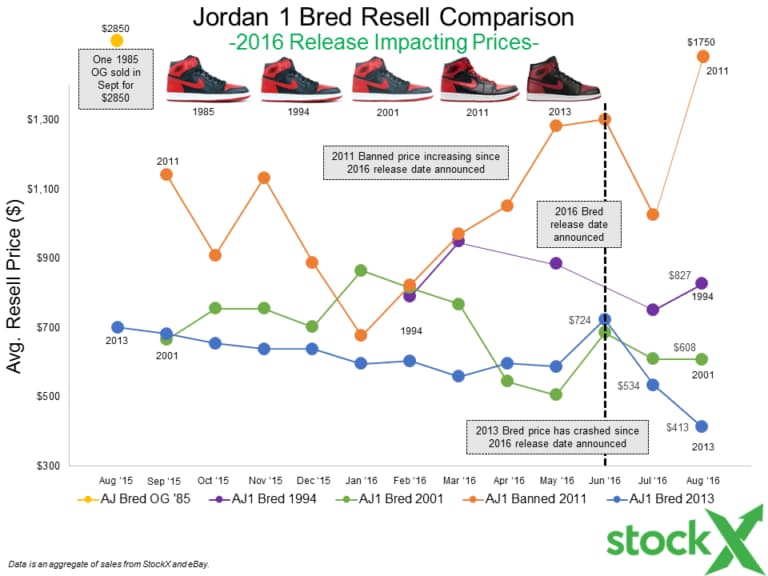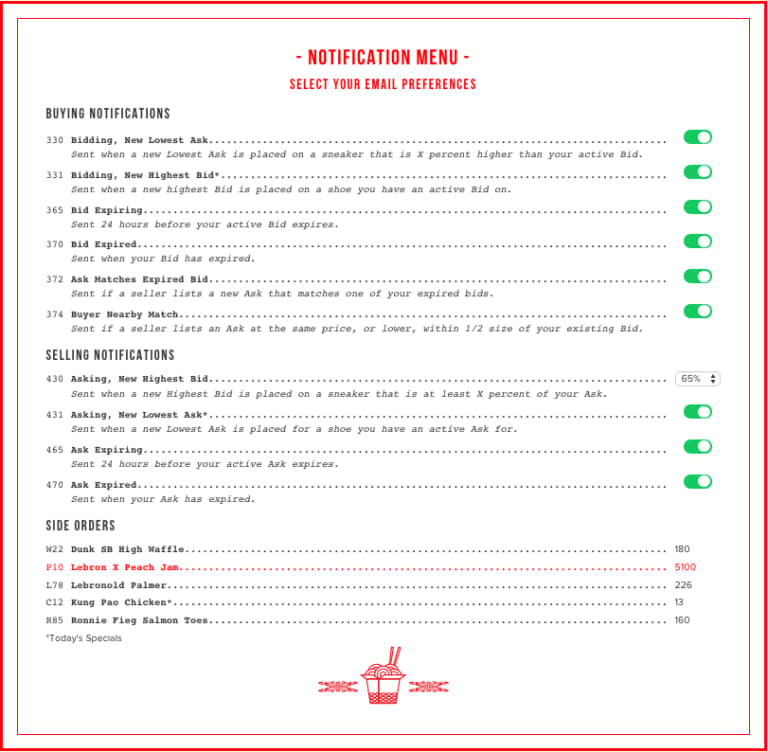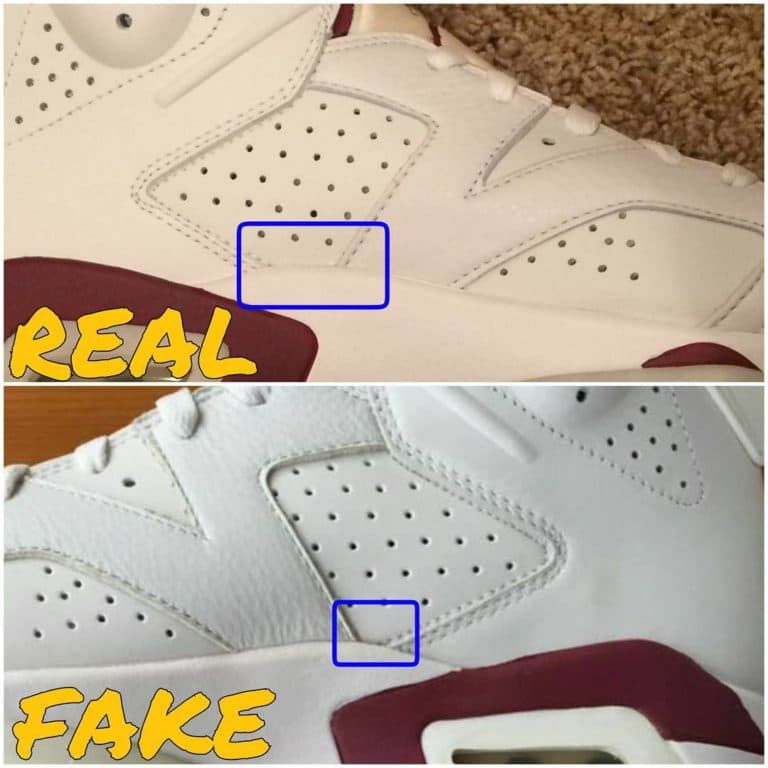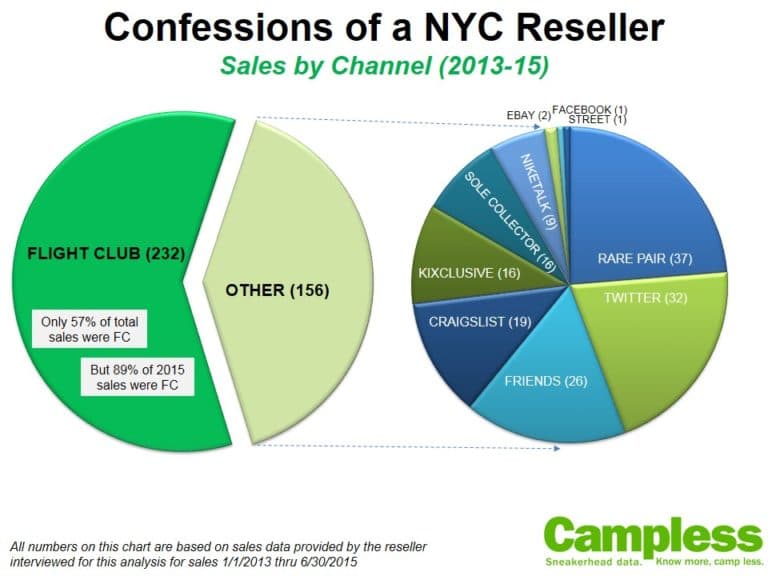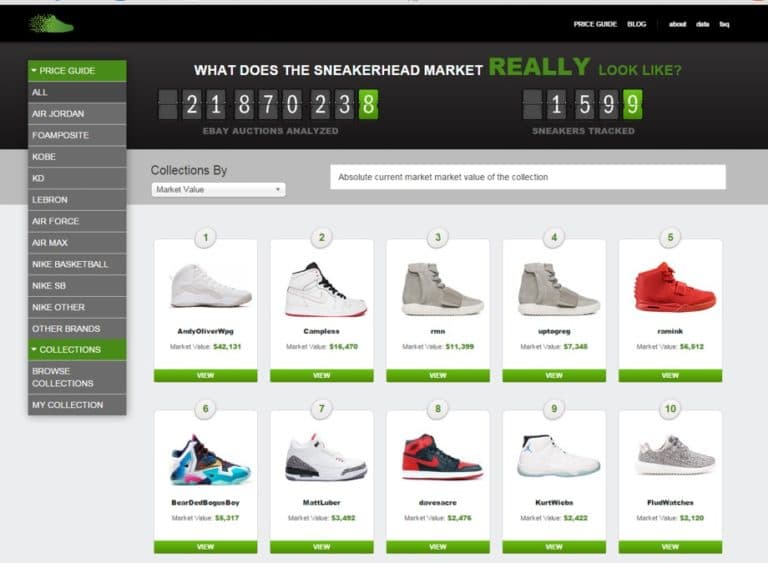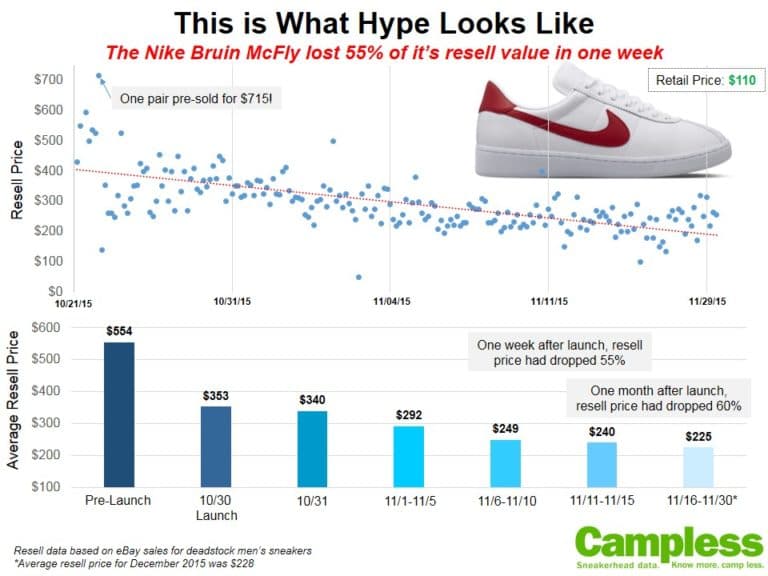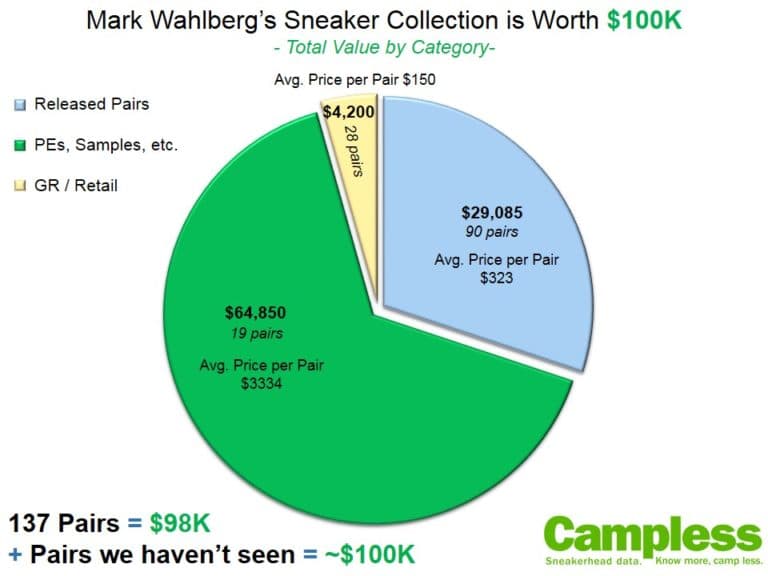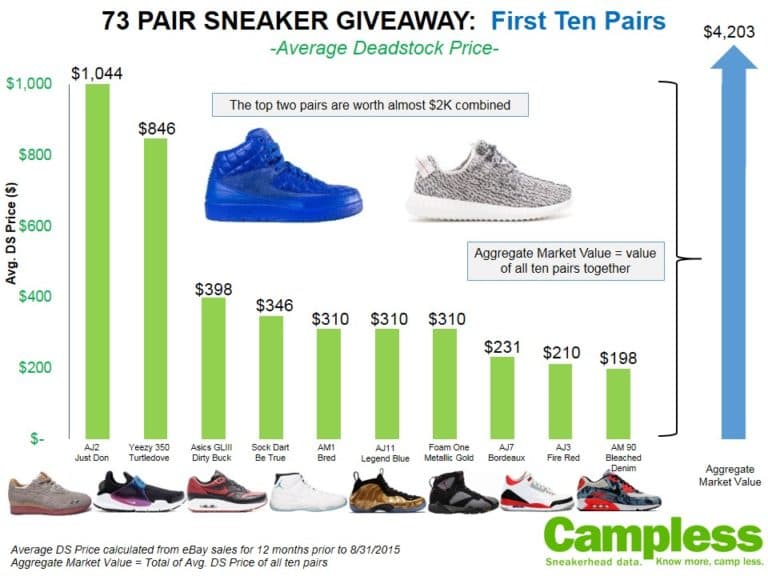Campless follows the sneakerhead market through the U.S. eBay site, the majority of which are auctions by U.S. sellers. Occasionally, however, resellers from other countries tread on our turf. Here’s how the various countries stack up based on the 839+ sneakers that we currently track.
This is a view of the Top 20 countries by sales volume on the U.S. eBay site (the bars) overlaid with the average price per shoe of those sneakers sold by foreign resellers (the line). We’ve chosen a 17 month time period (April 2012 – September 2013) and analyzed all eBay sales by all foreign sellers (non-U.S.) for any sneaker that Campless tracks. We included deadstock and pre-owned, mens and GS pairs. There doesn’t appear to be any visual relationship between volume sold and average price, but we thought it’d be interesting to see both data points together.
Not surprisingly, Canada had by far the most sales with 1,976 – which was more than 50% greater than the next most prolific country, Taiwan. France, Poland and South Korea round out the Top 5, all with at least 700. Of the Top 20 sellers, Russia has the highest average price per pair at $525.
In addition to the Top 20 countries listed on the chart, the following countries all had at least one sale during the relevant time period, listed in order of most sales to least: Sweden (95 sales), Ireland, Hungary, Malaysia, Brazil, Thailand, Lithuania, Czech Republic, Switzerland, Mexico, Portugal, Philippines, South Africa, Turkey, Ukraine, Finland, Isreal, Denmark, Norway, Virgin Islands (U.S.), Guam, Bulgaria, Georgia, UAE, Indonesia, Belarus, Slovakia, Luxembourg, Vietnam, Barbados, Bermuda, Chile, Estonia, Iceland, Cayman Islands, Romania, Bahamas, Macau, Qatar, Austria, Cyprus, Ecuador, Honduras, Jordan, Latvia, Marshall Islands (1 sale). Wow.
Some interesting facts:
- In total, there were 11,610 sales through U.S. eBay by foreign sellers (of sneakers we track) at an average price of $345 per pair
- 66 different countries had at least one sale, providing even more evidence that sneakerhead culture is indeed global
- Romania had only three sales, but the average price per pair was $1,114! We took a deeper dive and found that two of these were Yeezy 2s – one Solar for $1,950 and one Platinum for $,1025 – from two different sellers
- After Romania, Luxembourg had the next highest price per pair at $768. They also had two Yeezy 2s, and only 4 pairs sold total.
In addition to sales volume and price, we thought it’d be interesting to look at shipping costs:
In this chart we have the same Top 20 countries by sales volume, but we’re showing the distance (in miles) from the United States (the bars) overlaid with the average shipping cost (the line). Distance is calculated from Independence, Kansas which must be the center-most point in the continental 48, because the site DistanceFromTo uses it to calculate mileage between the U.S. and other countries (and we used that site).
Unlike the first chart, we expect to see a relationship here. We expect that countries farther away from the States will have higher shipping costs. Take a quick glance at the chart and we can conclude that that relationship does not exist in this picture. If it did, then the shipping cost line would appear to move in concert with the bars – and that certainly isn’t what we see. Why not? Here’s where some eBay knowledge comes in.
Sellers often play with shipping cost – bump it up or down regardless of what it actually costs to ship. They do this to make the sales price appear to be higher or lower, based on how they want to position their products in the marketplace. Low price seller? Increase shipping costs. Great deal seller? Shipping is free! So at the end of the day, all we know for sure is that shipping costs are meaningless. And that’s why we don’t see any relationship in the above chart. Or is it?
If we were to assume that the “shipping cost games” are played uniformly across countries, then we should still a relative relationship between countries – i.e., countries father away should have higher shipping costs. So the fact that we don’t see a relationship means that either a) the “shipping cost game” is not played the same across countries, or b) we don’t have enough data for that assumption to play out statistically. Either way, what you see is what we got – feel free to draw your own insights from the data.
Any foreign resellers out there? Do you have any insights to add?







